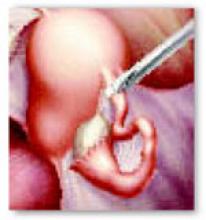<huc>Q</huc> I always have trouble getting insurers to pay for code 58611 (ligation or transection of fallopian tube[s] when done at the time of cesarean delivery or intra-abdominal surgery). The explanation of benefits (EOBs) states that an assistant is not required. Do you have any suggestions?
<huc>A</huc>ctually, there are 2 issues here: payment of a tubal ligation at the time of cesarean, and using an assistant during the ligation. You will probably have to appeal each case—unless you can persuade the payer to make a policy change.
The American College of Obstetricians and Gynecologists (ACOG) may be able to help with this. Its Committee on Coding and Nomenclature published 2 Committee Opinions on these topics.1,2
In Tubal Ligation with Cesarean Delivery, ACOG states that tubal ligation is a distinct procedure with its own risks and liability; thus, it should be coded separately from the cesarean.1 In the second opinion, Statement on Surgical Assistants, ACOG asserts that the surgeon’s judgment should dictate whether a surgical assistant is used; this should not be overruled by any third-party payers.2
The American College of Surgeons also published data on the need for an assistant for all procedures with CPT surgical codes. It determined that an assistant is “almost always required” when procedure 58611 is performed.3
From a coding perspective, the assistant would bill the “delivery-only code” for the cesarean—59514-80 (cesarean delivery only, assistant surgeon) or 59620-80 (cesarean delivery only, following attempted vaginal delivery after previous cesarean delivery, assistant surgeon)—along with 58611-80 for the ligation.
Note that 58611 is a CPT add-on code; it does not take a “multiple surgery” modifier because it can only be reported with a cesarean delivery code.


